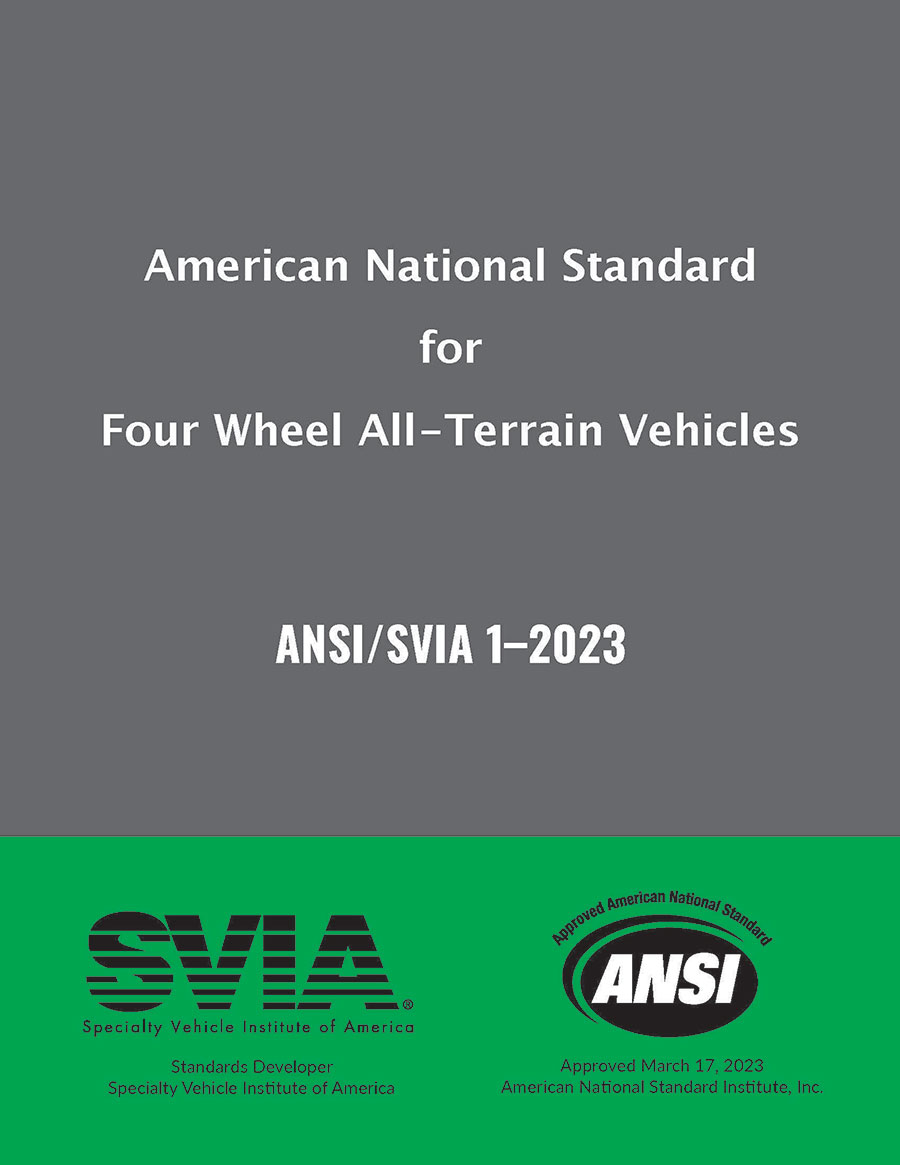About the ATV Standard
In 1985, the SVIA began development of a standard, which established the requirements for equipment, configuration, and performance of four-wheel all-terrain vehicles in the United States.
In 1990, the ANSI approved the first standard for all-terrain vehicles. In 2001, the standard was revised to modify certain definitional language and add several provisions to enhance and clarify the standard.
In 2007, the standard was updated to include definitions for Type I and Type II ATVs; new Y-10+ and T category ATVs; requirements of Type II ATV passenger handholds and footrests; new requirements for labels, owner’s manuals, hang tags; and a compliance certification label. The standard was further refined in 2010 to retain the Y12+ Category, updated label requirements, and incorporate the interpretations from the previous editions. The 2017 edition included provisions regarding vehicle conspicuity and allowed for the use of non-pneumatic tires. The current version, ANSI/SVIA 1-2023, includes provisions regarding fuel systems and hot surfaces; harmonization with certain Canadian technical standards; and addition of a friction coefficient for braking test surfaces.

